We cycled out of the hotel, which was located in the middle of Siem Reap, out to the Temple areas. Where possible we were on back or side dirt roads, and even some narrow paths through some jungle to avoid the tuk tuks and large tourist buses. Once we got to the ticket center however it was clear that we would be visiting the Temples of Angkor during the midday rush. We avoided them as much as possible by using the lesser known gates and temples.
The temple complex is enormous and there are hundreds of temples surviving in some form today. Angkor is the perfect fusion of creative ambition and spiritual devotion as each Cambodian god-king of old strove to better their ancestors in size, scale and symmetry. At its zenith Angkor boasted a population of nearly one million at a time when London had a population of 50,000.
The best known and largest of these temples is Angkor Wat, which was surrounded by a moat which was 190m wide, and served as a shrine to Vishnu. Stretching around the outside of the central temple is an 800 meter long series of incredible carvings in bas-relief, telling ancient and mystical Hindu stories, including one that depicts the 37 heavens and 32 hells. (All stairways for kings have 37 steps reflecting this idea of heaven). Angkor Wat replicated the spatial universe in miniature. The central tower is Mt Meru, with its surrounding smaller peaks, bounded in turn by continents (the lower courtyards) and the oceans (the moat). The seven-headed Naga (mythical serpent) serves as a symbolic rainbow bridge for the humans to reach the abode of the gods. When a Buddhist king liberated Cambodia in the 16th Century the temple became Buddhist, and housed over 3200 Buddha statues made of various materials.
From there we cycled to Ta Prohm, built by a Buddhist king in 1180 with 39 towers. This is one temple that has been left to nature. When the French occupied Cambodia and cleared the trees from the other sites, they left this one as it to demonstrate what happens when nature takes its course. The largest tree which has grown up in the middle of the complex is called Sprung — hard outside and soft inside), and is estimated to be at least 250 years old. This is the temple where some scenes from Tomb Raider was shot.
From there it was a harrowing (for me) ride through the jungle to lunch. Narrow path with overgrown vines reaching out to the bicycle gears and scratch our legs
Then to Angkor Thom, set on over 10 sq km, with each entrance having towering gates featuring the magnanimous faces of the Bodhisattva. At the center is Bayon, built in the 12thC by King Jayavarman VII, epitomizing the creative genius and inflated ego of Cambodia’s most celebrated king. Its 54 gothic towers are decorated with 216 gargantuan smiling faces of Avalokiteshvara. We were there as the sun was low in the sky so it was quite spectacular.
And that was the end of our cycling adventure — we had a lovely group goodbye dinner, exchanged email addresses, and put away the cycling jerseys. But still much more to come. Stay tuned!
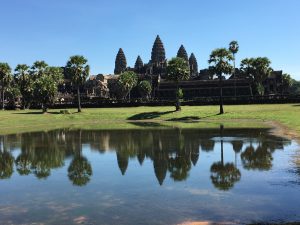
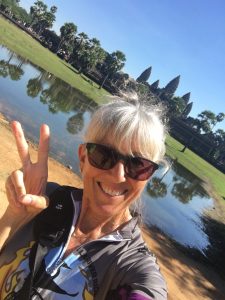

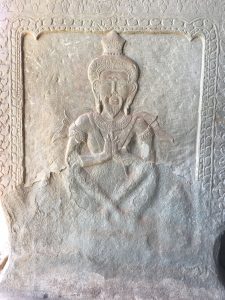
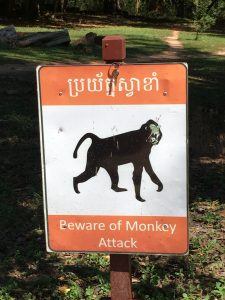
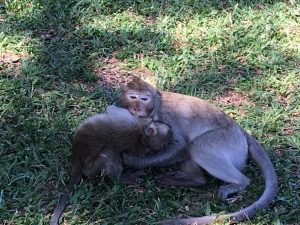
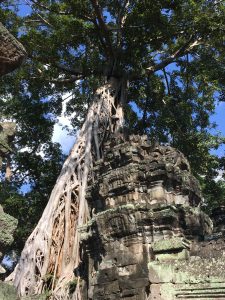
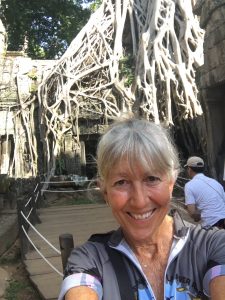
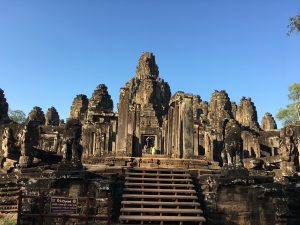
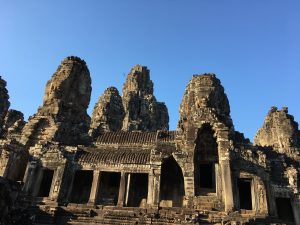
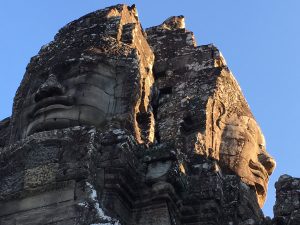
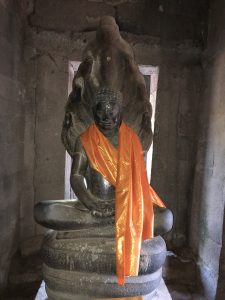

Breathtaking. I had not IDEA the temple area was so HUGE.